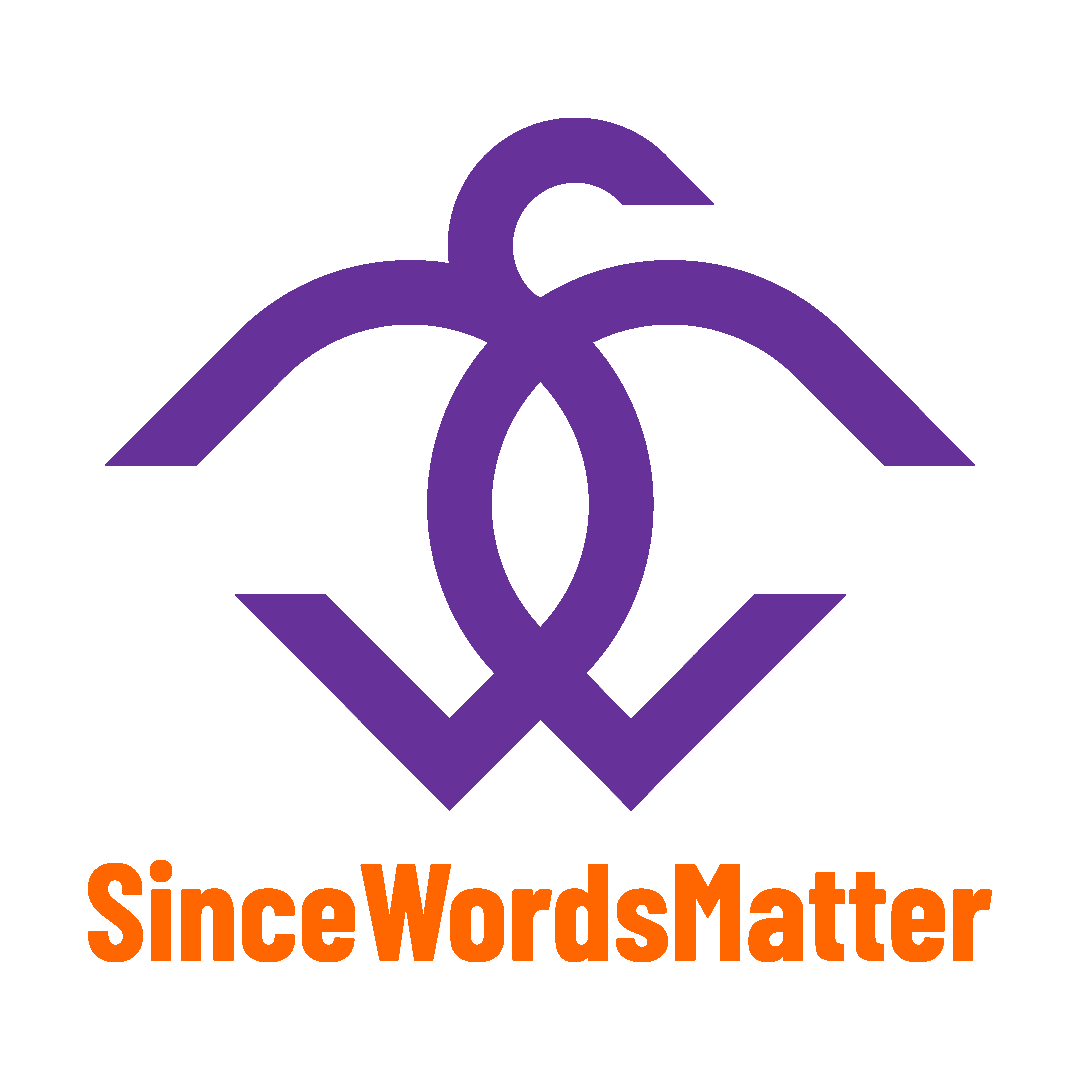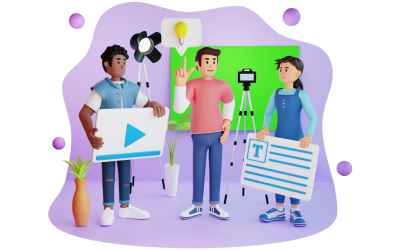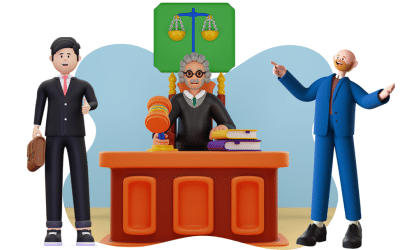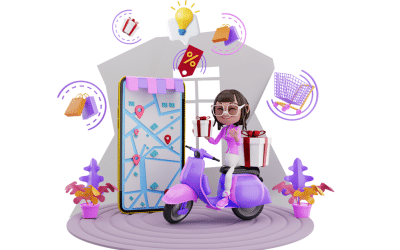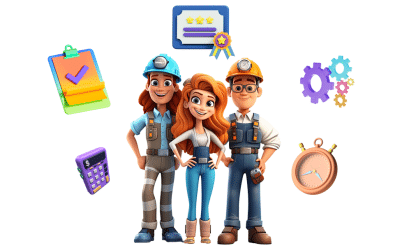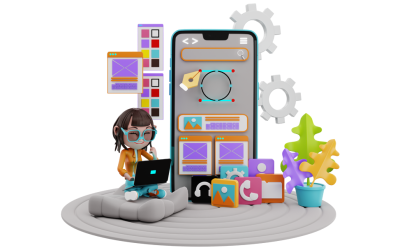Last Update on:
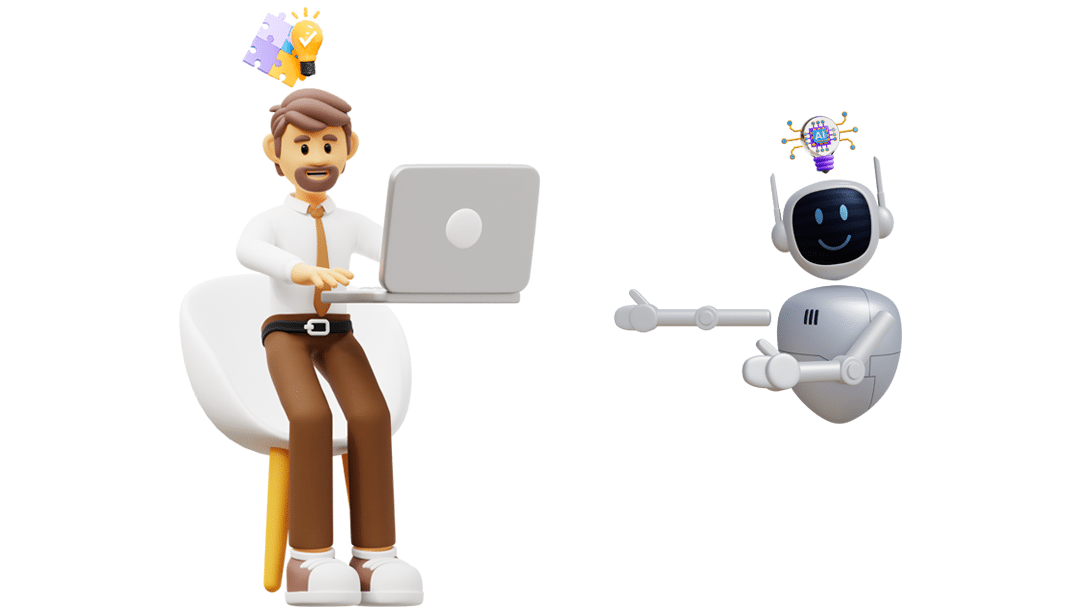
Businesses and individuals need to be able to communicate effectively across language barriers in today’s globalized environment. Machine translation (MT) and post-editing machine translation (PEMT) are typically promoted as more efficient and cost-effective options than human translators. Therefore, many have turned to these techniques as a fast and cheap way to translate content like documents and websites. Nevertheless, human translators are still better than machine translation for creating accurate, high-quality, cost-effective translations, despite advances in machine translation technology. The reality is that machine translation, even when combined with post-editing machine translation, has significant flaws.
Table of Contents
- The Many Flaws of Raw Machine Translation
- Post-Editing Fails to Resolve Core Machine Translation Defects
- The Superiority of Human Translation
The Many Flaws of Raw Machine Translation
In today’s globalized world, raw machine translation—using automated translation systems to translate text without human intervention—is commonplace. Despite its many improvements over the years, it is still far from perfect and thus inappropriate for many translation projects. While these methods provide a quick and cheap way of translating massive amounts of text, they are not without limitations. Although machines excel at processing data and making logical conclusions, they have trouble understanding the nuanced meanings of language. Inaccurate, confusing, or even insulting translations might result from raw machine translation’s many shortcomings.
1. Inaccurate Meanings and Mistranslations
Raw machine translation often results in inaccurate meanings and mistranslations. This error occurs when the machine translation system makes a faulty translation because it misunderstood the original language’s definition of a word or phrase. For instance, AI systems often translate “the United States” into Spanish as “Los Estados Unidos,” which is grammatically valid but not a popular way to refer to the country in Spanish. In Spanish, the United States is most commonly referred to as “Estados Unidos.” Mistranslations like this can have serious consequences, as they might confuse or insult target audiences.
2. Unnatural Phrasing and Word Choices
Human translators ensure accurate and natural translations, but the machine translation systems’ shortcomings are awkward phrasing and word choice. Because they can’t grasp the subtleties of language and context, machine translation systems typically produce translations that seem unnatural or stilted. This is especially challenging when translating idioms or colloquial phrases, which might lose their meaning because of the literal approach taken by most machine translation algorithms.
3. Grammar and Syntax Errors
The machine translation system may make mistakes while trying to use the target language’s grammatical and syntactical conventions. This can lead to translations that are illogical, contradictory, or otherwise incomprehensible to humans. For instance, a machine translation program translated a warning sign in a park in South Korea, which was originally “Do not throw trash here,” into English as “Please, throw garbage here.” The machine translation went wrong because the Korean term “안” can mean both “do not” and “inside.”
4. Cultural References Missed or Misunderstood
Cultural references include Idioms, metaphors, jokes, slang, etc. Machine translation algorithms generally take literal meanings for granted, making translations of idioms, metaphors, and humor challenging to understand or even laughably absurd. The meaning of these idioms and slang terms is inextricably bound up with the history and tradition of the language itself. It can, therefore, not be gleaned from a superficial examination of the words themselves. These statements’ cultural nuance and contextual complexity might be complicated for machine translation algorithms to grasp, resulting in erroneous or inappropriate translations.
5. Technical and Specialized Vocabulary Mistranslated
Machine translation has a hard time with specialized and technical terms. For example, a machine translation system may simply translate the German phrase “Kraftfahrzeug-Haftpflichtversicherung” as “motor vehicle insurance.” However, this German phrase refers to motor vehicle liability insurance. Technical jargon and specialist phrases with no direct equivalent in the target language are especially problematic for machine translation systems, which often produce inaccurate translations. For example, the Japanese phrase “医学部,” which means “medicine department,” can refer to a university’s medical school or faculty. But machine translation may translate “medicine department,” which would be misleading.
6. Long Confusing Sentences Generated
This error often happens when the machine translation system doesn’t understand the grammar and structure of the source text. For example, a Chinese statement with more than one clause might be translated into a long run-on sentence in English instead of being broken into shorter, easier-to-read sentences. Also, because machine translation usually translates phrases separately without considering the larger context, it often creates chains of sentences that don’t make sense and are hard to understand, mainly when pronouns like “it” and “he” are misused. For example, a machine translation from Japanese to English might make a text that says, “The doctor examined the patient. It was found he had a high fever. Immediate emergency treatment was required .” Because of this, the translated text is more like a puzzle to figure out than something that makes sense and flows well.
7. Format and Style Not Replicated
If a three-word phrase in German is written in boldface to make it stand out, a machine translation isn’t likely to bold those exact words in English. Likewise, if an important part of a French technical paper is underlined, this style detail is usually lost when a machine translates it into Chinese. Also, a machine translation from Japanese might turn a well-organized list of bullet points into a block of text with no clear order in Farsi. Or, a machine translation from Spanish to Arabic may turn a table with right-aligned columns of numbers into a messy table with left-aligned text. Loss of fonts, line breaks, and styling like bolding, italicizing, and underlining may seem trivial, but they can greatly distort technical documents’ original content and logic.
Although the quality of machine translation is generally poor, some claim that it can be enhanced by human post-editing. While post-editing is helpful in some cases, it is not a silver bullet solution to the challenges of machine translation. Creating understandable, naturally flowing, and accurate translations still requires a lot of work from humans. Since the intricacy of language is still too much for machines to manage, top-notch human translators will always be in demand.

Post-Editing Fails to Resolve Core Machine Translation Defects
Reviewing and revising machine-translated texts by human editors is known as post-editing machine translation (PEMT). Proponents of post-editing believe it’s more time-efficient because human translators can simply refine the output of machine translation systems. However, major issues still can’t be corrected through post-editing. For example, meaning and writing style inconsistencies persist, calling for extensive rewriting. As a result, post-editing has difficulties improving machine translation to publishable quality.
1. Editors Must Identify and Fix Many Errors
Post-editing machine-translated text is extremely labor intensive. According to a study on machine translation for Arabic, German, Spanish, French, Italian, Portuguese, and simplified Chinese languages, linguists had to revise roughly 30% of machine translations, even on neural machine translation products typically of considerably higher quality. Without human intervention, those inaccuracies would drastically diminish the clarity and correctness of the translation. Editors must carefully read over each sentence to ensure word choice, grammar, tone, and meaning accuracy. This takes a lot of time and energy, especially for larger documents. Given the current level of machine translation technology, attaining publication-quality translation needs human editors to literally re-translate the entire document – a task that is usually more burdensome than translating from the start.
2. Cost Savings Illusory
Complex technical publications are much more of a challenge for machine translation. In hospitals, for example, post-editing machine-translated patient instructions does not decrease costs due to the requirement to re-translate anything with medical specificity to avoid potentially dangerous errors. While machine translation seems cheap on the surface, human labor remains essential for accurate communication. Until significant advancements are made in artificial intelligence, machine translation will continue to suffer high post-editing expenses that nullify any cost reduction for most uses.
3. Quality Issues Remain
Post-editing may not be able to fix the fundamental problems with machine translation because it simply corrects obvious mistakes and does not address the underlying issues that affect the quality of machine translation. Machine translation review needs frequent pausing to look for strange wording that might suggest a mistake. Post-editing hundreds of sentences quickly and repeatedly can be tiring and lead to some errors slipping through the editing process. According to research conducted in 2022 by Devin Robert Gilbert at Kent State University, 17.8% of the 152 issues that remained after post-editing machine translation were ‘obtrusive’ issues (the issues that would substantially distract a reader).
4. Despite Editors’ Best Efforts, Nuance Is Lost
Since machines cannot completely grasp context or subtext, subtle connotations, implied meanings, cultural references, and wordplays are lost, leaving writings correct but robotic. Sarcasm, irony, and humor are incomprehensible to algorithms that lack human cultural awareness. The description suffers when the emotional impact and sensory details that make up a description are absent. Arguments are reduced from their complex form to a series of linked facts via logical operators. Skillful writing’s rich connections, allusions, and ambiguities are simplified to banal statements connected by “and” and “but.” While post-editors do their best to bring back lost flourishes, they can’t stop language from becoming plain. At best, post-edited texts come out as competent but lack inspiration. At worst, they are correct but stilted, much like an AI chatbot’s responses to an email.
5. Cannot Close the Terminology Gap in Technical Texts
Machine translation systems have a significant obstacle in the area of technical terminology since it is difficult for algorithms to understand the complex and precise meanings of specialized words. Though post-editors work hard to make things right, technical texts stubbornly resist repair. The flawed output of machine translation lacks the rigor and precision required in technical writing. Inconspicuous mistakes and omissions in vital areas go unnoticed and are left uncorrected. A skilled reader will likely be confused or misled by imprecise word choices. The post-editing process can help close some of the gaps in understanding, but the final product will always bear the marks of the imperfect machine translation that was used in the first place.
6. Errors Recur Without Human Feedback to the Engine
An essential part of every language model is its feedback loop. Without it, machines can’t use the changes made by editors to refine their language models. Machine translation relies heavily on trial and error, but because the systems lack a way for editors to provide meaningful feedback, they cannot eliminate reoccurring issues. Since machine translation systems cannot learn from post-editor changes, errors will continue to occur in future translations. This results in post-editors constantly fixing the same errors, some of which are glaringly obvious. Thus, being a post-editor might feel like a never-ending loop of addressing the same types of errors over and over, which is obviously tiring and demotivating.
No amount of post-editing can turn poor-quality machine-translated output into skilled human translation products. Human translators have more leeway than rigid, erroneous algorithms to factor in reasoning, cultural context, and communication skills while working with text. They’re not merely robotic word-switchers; they can pick up on subtle language changes and convey the original’s intended meaning. Because machine translation’s fundamental flaws cannot be fixed with post-editing band-aids, human translation remains the gold standard for accurate, fluent, and culturally appropriate translation. The accomplishments that can be achieved by entrusting text to the creativity of bilingual professionals cannot be replicated or replaced by computer algorithms with post-editing.
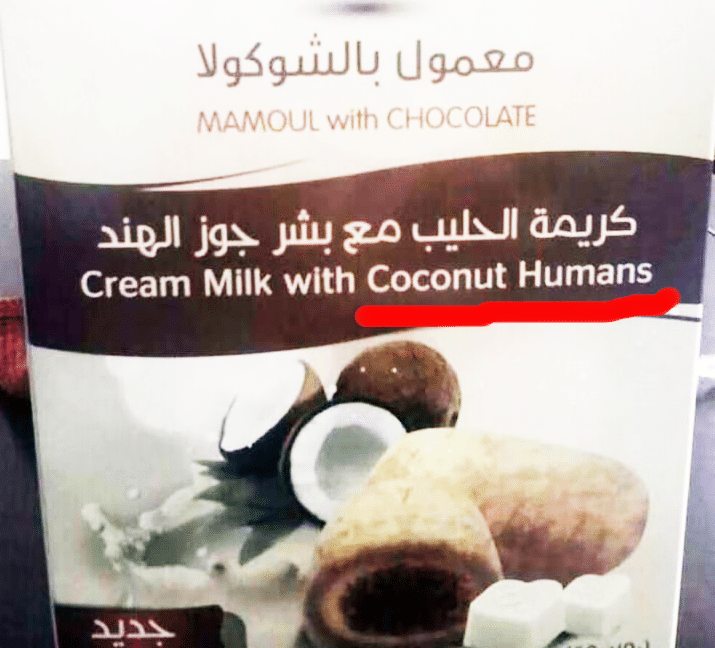
The Superiority of Human Translation
Nothing beats the talent and creativity of a human translator when it comes to conveying the meaning of a text from one language to another. Only humans have the intelligence to choose the best phrasing to bring the intended idea into the target text while retaining the elegance of the language in complicated, high-value writings. Moving artistry from one language to another is part science, part art – and artistry is the unique realm of the human mind.
1. Native Fluency And Mastery
In contrast to translation machines, human translators have the native command of both the source and target languages. Human translators have a deeper grasp of the cultural significance of words and phrases. Because of this, they can accurately translate figurative languages such as idioms, puns, metaphors, and other creative uses of language that have subtle meanings in the source language but no literal translation in the target language. Machines may translate words literally, but they can’t always comprehend the meaning or tone of the original. However, a human translator can capture the essence of the source text and convey it authentically and accurately in the target language.
2. Cultural Awareness
For millennia, the human brain has honed its ability to infer cultural meaning from context, read between the lines, and grasp both words and their underlying significance. Instead of translating literally and losing the delicacy, they can transmit the original author’s message by creating a creative parallel reference or explanation that keeps the original subtlety intact. Human intelligence, having lived and felt the culture, can intuitively understand and update itself to the latest cultural trends, while artificial intelligence struggles and often fails to interpret effectively in these subtle circumstances.
3. Complex Technical Concepts and Vocabulary Are Handled Well
Throughout their careers, human translators spend countless hours perfecting their command of multiple languages, as well as expanding their knowledge of technical concepts, specialized vocabulary, and nuanced phrasing in fields like medicine, law, and engineering. They are also skilled in translating complicated writing styles and pros in manuals, research papers, patents, and other complex materials. By the way, machines often have trouble handling ambiguous technical jargon, such as terms with one medical definition and another legal one. When a high level of technical accuracy and a firm understanding of niche concepts and vocabulary are essential, AI cannot yet compare to the technical competence of a human translator.
4. Artistic Creativity
Poetry, lyrics, marketing copy, moving speeches, dramas, novels, and sacred texts require a translator to go beyond exact translation to preserve the original language’s intangible elements, such as cadence, passion, wit, and more. This necessitates thoroughly comprehending the underlying cultures, aesthetics, and emotions. The human mind is uniquely capable of translating the words and the spirit and emotion behind them into a language that is both evocative and meaningful to the listener. Furthermore, the human intellect recognizes when to take artistic license for the sake of poetry and when to add clarifying phrases that were not in the original text but were required to express the message. Such innate artistic skill is unmatched by even the most sophisticated AIs.
5. Formatting, Typography, and Layout Expertise
The effects of different typefaces, sizes, positionings, and formatting methods are easily understood by humans. Expert human translators can preserve the original document’s style, readability, and visual impact in their translations by faithfully but culturally reproducing formatting elements like bolding, italics, underlining, text wrapping, indents, and bullets. Humans also have the visual-spatial abilities to recreate the exact positioning of text, columns, boxes, and other design components, which machines have trouble effectively representing. Human translators and designers have an advantage over machine translation tools in maintaining the visual integrity of documents such as brochures, reports, infographics, and magazines during translation.
The accurate translation that preserves every nuance and detail is only possible thanks to the human combination of creativity, cultural knowledge, subject matter expertise, technical finesse, and creative flare. The human capacity for nuanced cognition, analytical rigor, and creative expression enables translations to do more than merely render one language into another. They seamlessly convey ideas across cultural contexts, literary traditions, and aesthetic media.
Human translation is better than machine translation for legal papers, healthcare instructions, technical manuals, novels, poems, and religious scriptures. While machines can be helpful in our efforts to bridge language barriers and share information and ideas, the most accurate translations will always require human ingenuity to ensure they reach their intended audiences regardless of where they are or what they speak.
Compared to machine translation, human translators add an extra layer of professionalism, nuance, and accuracy that benefits your business. A human translator’s ability to inject originality, cultural sensitivity, and expert knowledge into a translation is why many companies hire them. Human expertise ensures that technical terms, cultural references, and emotional nuance are accurately represented while translating between languages. Human translation is the obvious choice when highly polished and professionally customized translations are required to engage with new audiences.
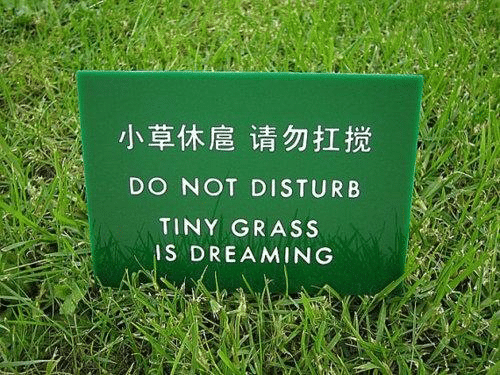
Avoid using random translation services for your company’s international communications. Invest in good translation services and translation review and editing solutions that adhere to ethical standards to convey your message faithfully and effectively. Work with genuine human specialists when your project’s success hinges on a nuanced, polished, and culturally appropriate translation. Putting in the time and effort to achieve the highest standards of precision, quality, and excellence can pay off well as you broaden your international presence.
Trusting your projects to experienced human specialists rather than algorithms is the smart decision if you want high-quality translations suited to your demands. SinceWordsMatter guarantees to provide you with the greatest quality translation at the most reasonable cost by employing only native speakers of the target language. We do not consider AI technology to be an opponent. They just don’t cut it in our eyes as qualified linguists since human translators are better than machine translation, yet. To help catch the mistakes that even the best human translators make, we employ artificial intelligence and CAT (Computer-assisted translation) tools.
